We suspect that Ghanaian companies are probably not getting optimal returns from their accounting systems investment. The findings of our data team confirm our suspicions.
In 2019, we made data analysis an essential part of our audit process, re-engineered our audit process and deployed data analytical tools such as MindBridge AI and CaseWare IDEA.
On all audits since then, we get data from the client’s computerized accounting system and carefully analyze them using our data tools. During this period, our Data Analytics unit has analyzed data from over 30 companies using different computerized accounting information systems.
From the data, we pieced together this insight about their use of Information Technology (IT). Our findings suggest most that many businesses are probably not getting optimal returns from their Accounting System investments and they have accounting data quality issues. If data is gold, data quality issues prevent the organization from mining the gold.
We have classified the common issues we find as:
- Systems configuration problems
- Security
- IT skills of the accountants
- Quality of accounting information
We discuss these issues further in this article.
System Configuration
Few businesses can afford to build their accounting software from scratch. Most will buy and implement off-the-shelf accounting package. These packages must always be configured to meet the needs of the buyer. An improper configuration can cause inaccuracies in your data and reports.
The issues we found with the configurations are:
A. Setup of the Chart of Account
How you organize and set up your chart of accounts can affect the quality of the reports you produce from your accounting system. Some issues with the charts of accounts are:
(i). Illogical design- We found several instances where the design of the charts of accounts is not logical and makes no room for adding new accounts. This can make reporting tedious and cause inaccuracies in the reports from the system. When designing a chart of accounts, one must consider:
(a) The reports required– design the chart of accounts so you can produce the reports you desire without too much hassle.
(b) The structure of the organization– must you provide information on a specific part of the organization e.g. cost centers? If yes, you must consider this in structuring the chart of accounts.
(ii) Wrong classification of accounts– we found instances of asset accounts tagged as a liability account and vice versa.
In all accounting systems, you must classify and tag the individual accounts to the applicable class–asset, liability, equity, revenue, or expenses. The class of the account affects how it appears in the financial statement. If you tag a liability account as an asset account, the balances show in the assets section of the financial statement.
(iii) Date Settings- Dates are an important detail in understanding accounting data. You can enter dates in two formats, DD/MM/YYYY or MM/DD/YYYY. The two formats represent different dates. If you do not set the date format, you create room for individual users to enter dates in any format making it difficult to understand reports from the system.
This is a simple issue, but it can have a devastating effect. To avoid this, you must determine date settings and set it as the default format.
B. Using Only the General Ledger
Most accounting packages offer features such as general ledger, accounts receivable, accounts payable and bank/cash processing. The more sophisticated packages may offer more features. You must customize and properly setup the features to meet the needs of the company. The issues we found here are:
(i) Using Only the General Ledger–we found that some companies used only the general ledger, even though they had receivables and payables features. If you use only the general ledger, you must capture account receivable and payable transactions manually. This creates room for errors.
We believe that companies that use only the general ledger and neglect the other features miss the opportunity to use the features to streamline their businesses and enhance efficiency.
(ii) Receivable and Payable Features– some companies used the receivable and payable features, but they were not properly setup. It was common to see they have not defined payment terms. When you do not set up the terms of payment, you cannot correctly age your debts and you cannot tell if a debt is overdue. This can affect your cash flow because you do not have timely information to pursue and collect your debts. One can easily correct this deficiency by defining payments terms and setting it up on the system.
We continue this article in part 2 where we discuss observation on security, IT skills of accountant and the quality of accounting information.
For more blogs and information please follow SCG Chartered Accountants on Facebook, Twitter, Youtube and LinkedIn.

